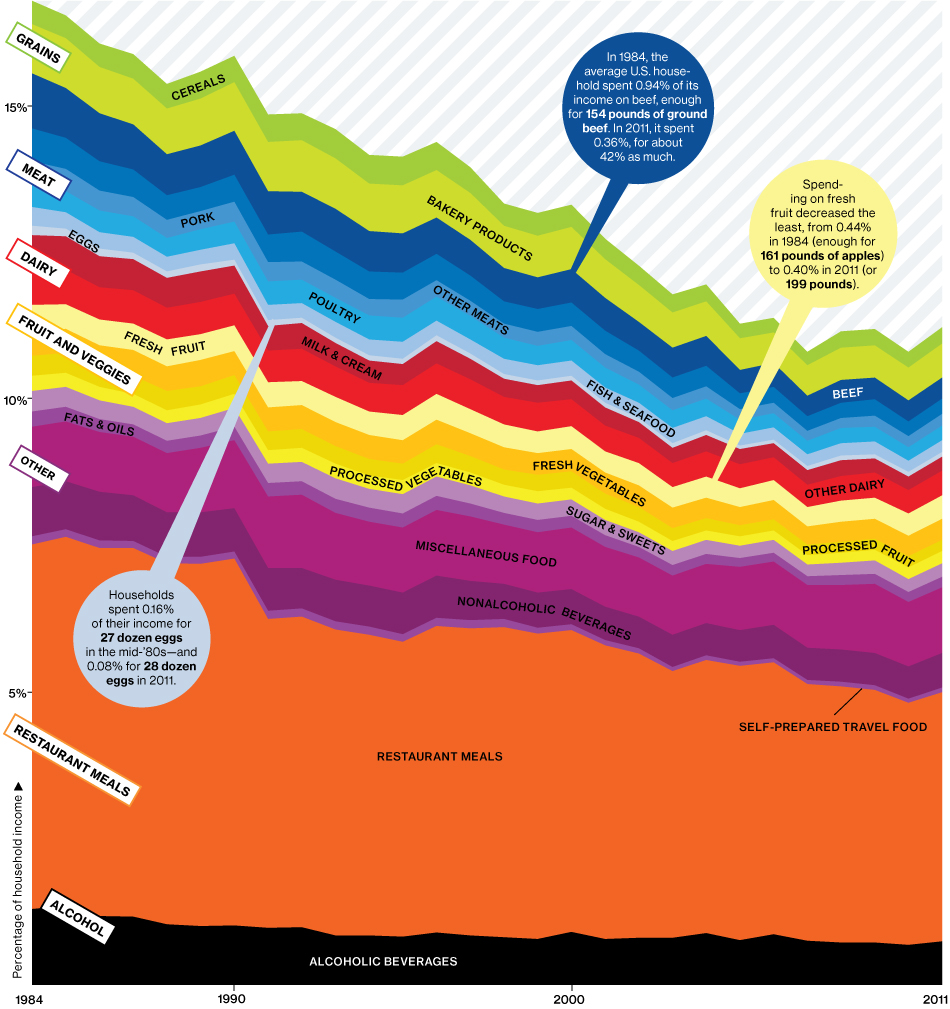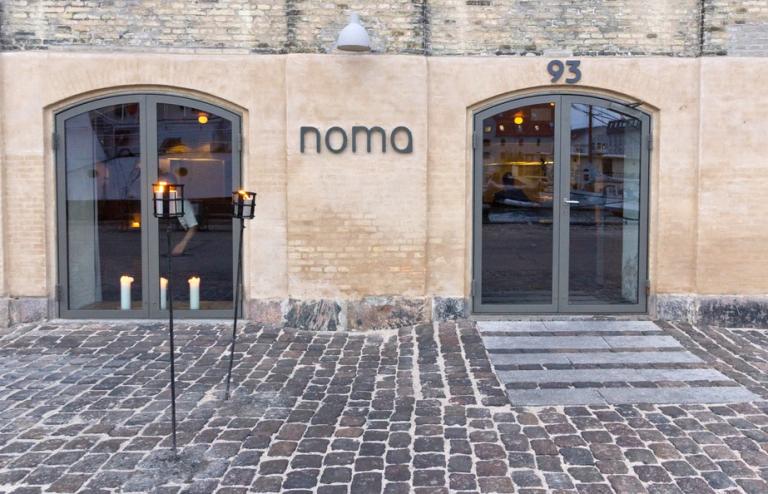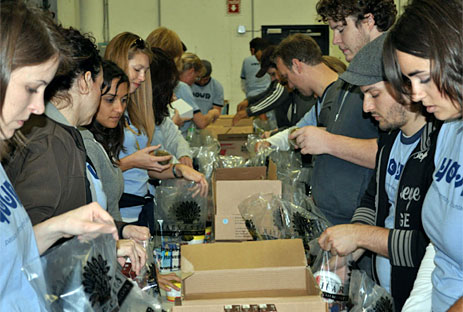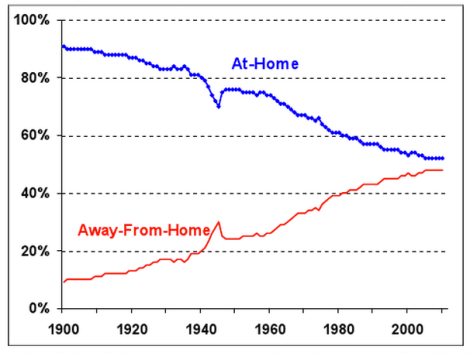Excellent infographicker Dorothy Gambrell recently broke down falling American food costs and some changing tastes for Bloomberg Businessweek.

Bloomberg Business WeekClick to embiggen.
Beef prices and consumption are both way down, while fresh fruit prices decreased less than any other category. Overall, though, it looks like food is getting a lot cheaper! And that’s true, ish, but it’s not the whole picture.
Over the past century, food costs as a percentage of income have been dropping like overripe fruit that you forgot to pick off the tree. But those lower prices aren’t exactly adding up for the poor. Derek Thompson at The Atlantic finds that poor families are still spending the same percentage on food that they did 30 years ago, while middle-income and richer folks are paying significantly less.
Overall, the falling burden of food costs is good news for lower- and middle-class families. It means they can devote more money to things like health care and education and energy and homes, which are getting expensive faster than their wages are rising. But we shouldn’t rule out the possibility that those accelerating costs are putting pressure on poor families to spend less on food.
In other words, we can’t rule out that the lowest-income households only spend one-sixth of their money on food, not only because real food prices are falling, but also because they’re forced to consume less, as mortgages and gas prices eat into the budget.
As a part of those food costs, Thompson breaks down at-home and eating-out budgets. The poor spend more than twice as much eating at home than they do at restaurants, while the rich spend only slightly more on home-cooked meals. Thompson presumes this means the poor are eating at home way more often. That could be, but this analysis only takes into account dollars spent, not the number of meals those dollars bought. Folks making less money may be eating out, too — after all, fast food is cheap as hell.
And as Thompson himself points out, Americans are eating out far more than we used to. Here’s his graph comparing overall eat-at-home and eat-out trends over the last century, as a percentage of total meals eaten.
How many of those meals might have been off the McDonald’s $1 menu? And how many of them might have been bought with food stamps? In some states, fast food restaurants are some of the only places people can buy hot prepared meals with food stamp benefits, making them extra palatable and convenient for the working poor.
At the Nation, Greg Kaufmann points to A Place at the Table, a new film which highlights the hungry plight of the poor and the assistance programs aimed at alleviating, but not solving, the problem.
In the last 30 years, America’s soup kitchen and food bank ranks have grown from 200 to 40,000 (assistance that isn’t taken into account when we talk about how much the poor spend on food). To blame, according to the filmmakers: Big Ag lobbyists and subsidies for corn and grain that leave pricier fresh produce out of poor hands. “Since 1980, costs for fruits and vegetables increased by roughly 40 percent leaving financially struggling families with little choice when it comes to cheapest calories at the local mini-mart,” writes Kaufmann.
But, but, that pretty graph said they were cheap now …
[B]eyond reforming the formidable lobby that prevents Congress from fixing kids’ nutrition in America, the film hints at what else is needed. At the end of the day, even if we’re funding healthy meals for all Americans and feeding our kids properly, we haven’t fixed the root problem of poverty. … [I]f working American families aren’t afforded a livable wage, then we will forever be reacting to hunger, not preventing it.
A lack of a farm bill has left the future of food benefits in limbo for months. Now cue the sequestration that’s set to make this all even worse. Our food may be getting cheaper, McDonald’s included, but we have a lot of work to do if we’re serious about getting good food to those millions of grumbling American bellies.





